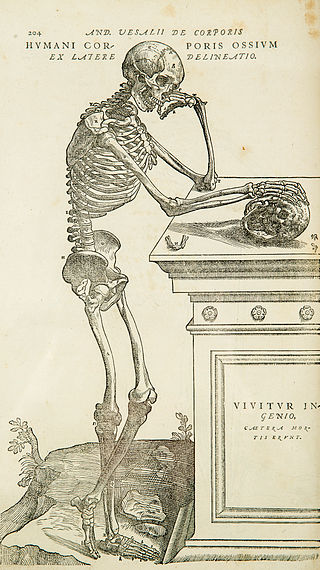
Anatomy is the branch of morphology concerned with the study of the internal structure of organisms and their parts. Anatomy is a branch of natural science that deals with the structural organization of living things. It is an old science, having its beginnings in prehistoric times. Anatomy is inherently tied to developmental biology, embryology, comparative anatomy, evolutionary biology, and phylogeny, as these are the processes by which anatomy is generated, both over immediate and long-term timescales. Anatomy and physiology, which study the structure and function of organisms and their parts respectively, make a natural pair of related disciplines, and are often studied together. Human anatomy is one of the essential basic sciences that are applied in medicine, and is often studied alongside physiology.
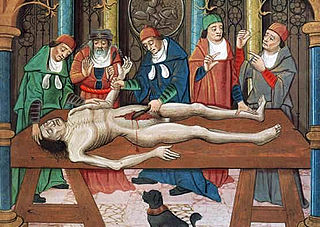
The history of anatomy extends from the earliest examinations of sacrificial victims to the sophisticated analyses of the body performed by modern anatomists and scientists. Written descriptions of human organs and parts can be traced back thousands of years to ancient Egyptian papyri, where attention to the body was necessitated by their highly elaborate burial practices.

Body Worlds is a traveling exposition of dissected human bodies, animals, and other anatomical structures of the body that have been preserved through the process of plastination. Gunther von Hagens developed the preservation process which "unite[s] subtle anatomy and modern polymer chemistry", in the late 1970s.

The history of anatomy in the 19th century saw anatomists largely finalise and systematise the descriptive human anatomy of the previous century. The discipline also progressed to establish growing sources of knowledge in histology and developmental biology, not only of humans but also of animals.

Mondino de Luzzi, or de Liuzzi or de Lucci,, also known as Mundinus, was an Italian physician, anatomist and professor of surgery, who lived and worked in Bologna. He is often credited as the restorer of anatomy because he made seminal contributions to the field by reintroducing the practice of public dissection of human cadavers and writing the first modern anatomical text.
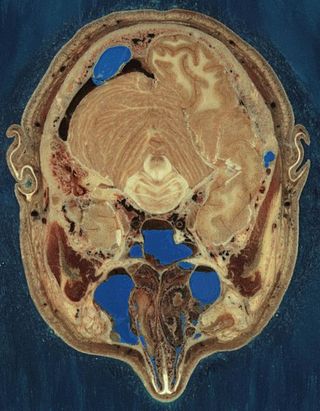
The Visible Human Project is an effort to create a detailed data set of cross-sectional photographs of the human body, in order to facilitate anatomy visualization applications. It is used as a tool for the progression of medical findings, in which these findings link anatomy to its audiences. A male and a female cadaver were cut into thin slices, which were then photographed and digitized. The project is run by the U.S. National Library of Medicine (NLM) under the direction of Michael J. Ackerman. Planning began in 1986; the data set of the male was completed in November 1994 and the one of the female in November 1995. The project can be viewed today at the NLM in Bethesda, Maryland. There are currently efforts to repeat this project with higher resolution images but only with parts of the body instead of a cadaver.
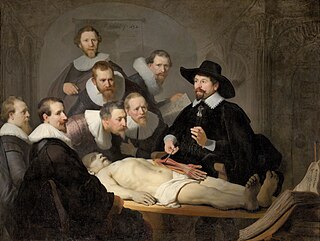
An autopsy is a surgical procedure that consists of a thorough examination of a corpse by dissection to determine the cause, mode, and manner of death; or the exam may be performed to evaluate any disease or injury that may be present for research or educational purposes. The term necropsy is generally used for non-human animals.
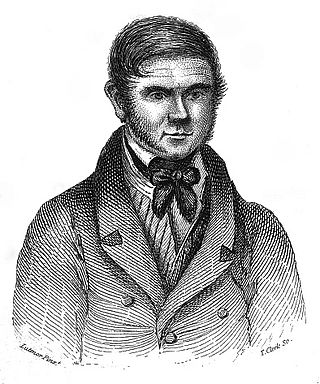
The Burke and Hare murders were a series of sixteen murders committed over a period of about ten months in 1828 in Edinburgh, Scotland. They were undertaken by William Burke and William Hare, who sold the corpses to Robert Knox for dissection at his anatomy lectures.

Dissection is the dismembering of the body of a deceased animal or plant to study its anatomical structure. Autopsy is used in pathology and forensic medicine to determine the cause of death in humans. Less extensive dissection of plants and smaller animals preserved in a formaldehyde solution is typically carried out or demonstrated in biology and natural science classes in middle school and high school, while extensive dissections of cadavers of adults and children, both fresh and preserved are carried out by medical students in medical schools as a part of the teaching in subjects such as anatomy, pathology and forensic medicine. Consequently, dissection is typically conducted in a morgue or in an anatomy lab.

Body snatching is the illicit removal of corpses from graves, morgues, and other burial sites. Body snatching is distinct from the act of grave robbery as grave robbing does not explicitly involve the removal of the corpse, but rather theft from the burial site itself. The term 'body snatching' most commonly refers to the removal and sale of corpses primarily for the purpose of dissection or anatomy lectures in medical schools. The term was coined primarily in regard to cases in the United Kingdom and United States throughout the 17th, 18th, and 19th centuries. However, there have been cases of body snatching in many countries, with the first recorded case dating back to 1319 in Bologna, Italy.
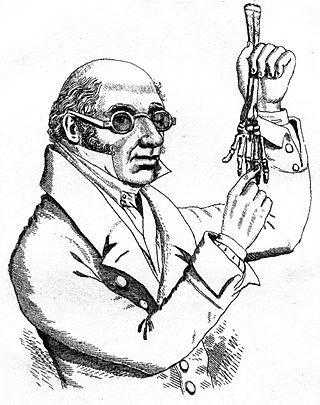
Robert Knox was a Scottish anatomist and ethnologist best known for his involvement in the Burke and Hare murders. Born in Edinburgh, Scotland, Knox eventually partnered with anatomist and former teacher John Barclay and became a lecturer on anatomy in the city, where he introduced the theory of transcendental anatomy. However, Knox's incautious methods of obtaining cadavers for dissection before the passage of the Anatomy Act 1832 and disagreements with professional colleagues ruined his career in Scotland. Following these developments, he moved to London, though this did not revive his career.
The London Burkers were a group of body snatchers operating in London, England, who apparently modeled their activities on the notorious Burke and Hare murders. They came to prominence in 1831 for murdering victims to sell to anatomists, by luring and drugging them at their dwelling in the northern end of Bethnal Green, near St Leonard's, Shoreditch in London. They were also known as the Bethnal Green Gang.
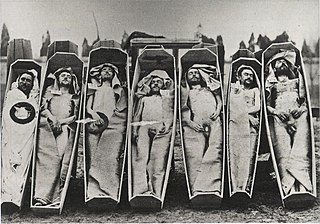
A cadaver or corpse is a dead human body. Cadavers are used by medical students, physicians and other scientists to study anatomy, identify disease sites, determine causes of death, and provide tissue to repair a defect in a living human being. Students in medical school study and dissect cadavers as a part of their education. Others who study cadavers include archaeologists and arts students. In addition, a cadaver may be used in the development and evaluation of surgical instruments.
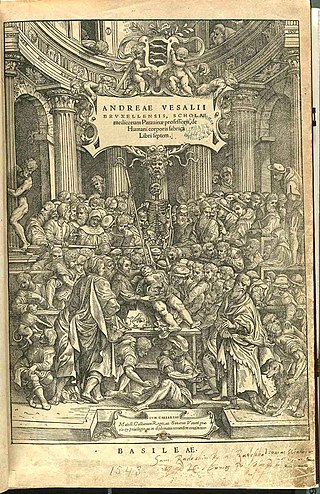
The Medical Renaissance, from around 1400 to 1700 CE, was a period of progress in European medical knowledge, with renewed interest in the ideas of the ancient Greek, Roman civilizations and Islamic medicine, following the translation into Medieval Latin of many works from these societies. Medical discoveries during the Medical Renaissance are credited with paving the way for modern medicine.

The Murder Act 1751, sometimes referred to as the Murder Act 1752, was an Act of the Parliament of Great Britain.

Gunther von Hagens is a German anatomist, businessman and lecturer. He developed the technique for preserving biological tissue specimens called plastination. Von Hagens has organized numerous Body Worlds public exhibitions and occasional live demonstrations of his and his colleagues' work, and has traveled worldwide to promote its educational value. The sourcing of biological specimens for and the commercial background of his exhibits has been controversial.
An anatomy murder is a murder committed in order to use all or part of the cadaver for medical research or teaching. It is not a medicine murder because the body parts are not believed to have any medicinal use in themselves. The motive for the murder is created by the demand for cadavers for dissection, and the opportunity to learn anatomy and physiology as a result of the dissection. Rumors concerning the prevalence of anatomy murders are associated with the rise in demand for cadavers in research and teaching produced by the Scientific Revolution. During the 19th century, the sensational serial murders associated with Burke and Hare and the London Burkers led to legislation which provided scientists and medical schools with legal ways of obtaining cadavers. Rumors persist that anatomy murders are carried out wherever there is a high demand for cadavers. These rumors, like those concerning organ theft, are hard to substantiate, and may reflect continued, deep-held fears of the use of cadavers as commodities.
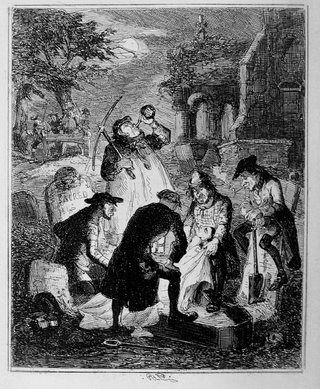
Resurrectionists were body snatchers who were commonly employed by anatomists in the United Kingdom during the 18th and 19th centuries to exhume the bodies of the recently dead. Between 1506 and 1752 only a very few cadavers were available each year for anatomical research. The supply was increased when, in an attempt to intensify the deterrent effect of the death penalty, Parliament passed the Murder Act 1752. By allowing judges to substitute the public display of executed criminals with dissection, the new law significantly increased the number of bodies anatomists could legally access. This proved insufficient to meet the needs of the hospitals and teaching centres that opened during the 18th century. Corpses and their component parts became a commodity, but although the practice of disinterment was hated by the general public, bodies were not legally anyone's property. The resurrectionists therefore operated in a legal grey area.
The Pennsylvania Anatomy Act of 1883 is legislation of the State of Pennsylvania to facilitate medical education. This act allowed teachers and students to be able to dissect bodies without have to resort to buying from grave robbers or buying body parts. This act was written to prevent grave robbing, and to even out the availability of corpses.
As anatomy classes in medical education proliferated in the 19th century, so too did the need for bodies to dissect. Grave robbery proliferated, along with associated social discontent, revulsion, and unhappiness. Conflicts arose between medical practitioners and defenders of bodies, graves and graveyards. This resulted in riots. Social legislation was passed in many countries to address the competing concerns.















